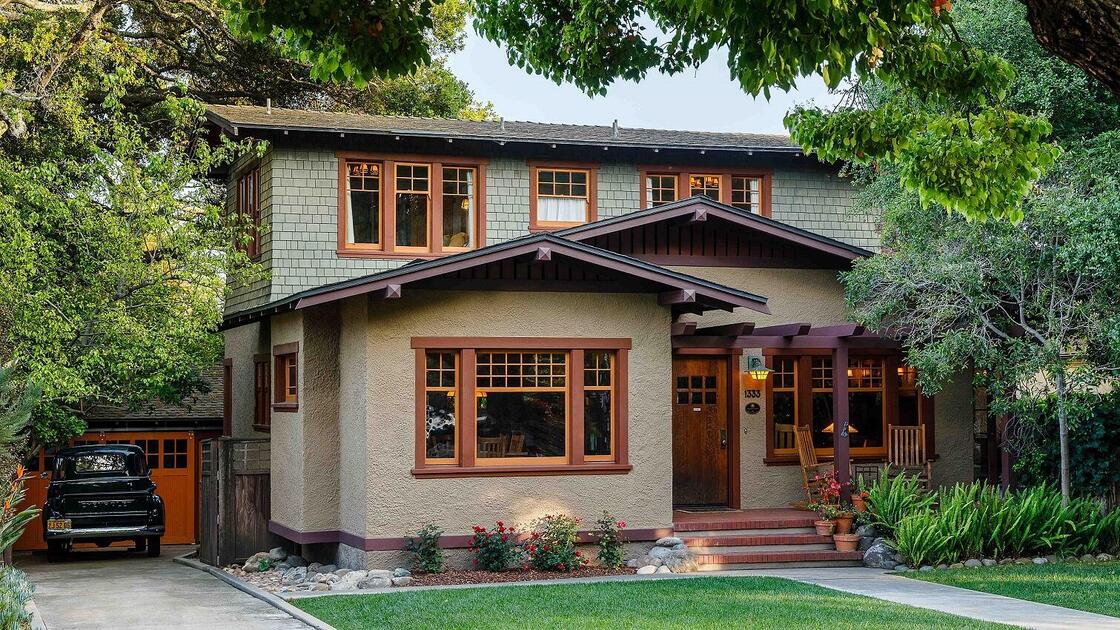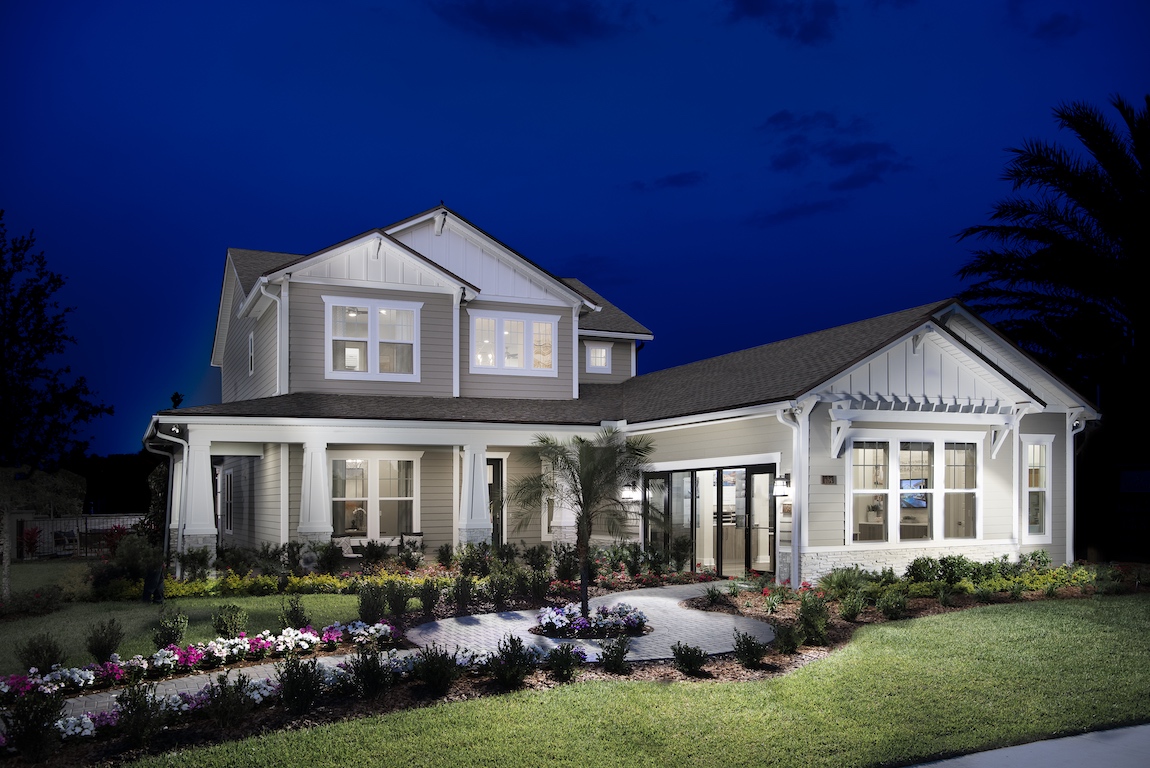Financial Insights for Building a craftsman style house Successfully
How Architectural Provider Transform Residential Architecture Into Stunning Living Spaces
Architectural solutions significantly impact property architecture, transforming basic frameworks into phenomenal living areas. Architects come close to each job with an one-of-a-kind point of view, concentrating on site evaluation and customer vision. They use innovative design devices to create practical layouts and attractive visual appeals. This transformative procedure entails far more than visual charm. It questions about sustainability, customization, and the evolving requirements of homeowners. What crucial elements add to this transformation?
The Function of Architects in Residential Design
Although numerous home owners envision their optimal living rooms, the role of designers in household design is vital for changing these visions right into reality. Architects bring a special blend of imagination and technological proficiency, guaranteeing that the style lines up with the house owner's wishes while adhering to regional building codes and policies. They conduct extensive site analyses, thinking about elements such as topography, climate, and neighborhood context, which influence the layout's usefulness and sustainability.
Additionally, engineers convert abstract concepts into concrete plans, utilizing advanced software application to produce comprehensive blueprints and 3D designs. Their collaborative method typically includes engaging with clients throughout the process, refining designs to better suit the property owner's way of life and preferences. Ultimately, architects act as both visionaries and problem solvers, stabilizing visual ambitions with usefulness, to develop magnificent and practical living areas that reverberate with the residents' needs.
Cutting-edge Design Principles for Modern Living
Architects play an essential role not just in recognizing property owners' visions yet likewise in pressing the limits of what modern living can include. Innovative layout concepts are significantly shaping household design, mixing aesthetic appeals with sustainability and functionality. Open up layout, identified by fluid areas, foster connectivity and versatility, permitting households to involve with each other in an unified environment. Including biophilic design, which stresses natural components, enhances wellness and creates a sense of peace within the home. Smart home innovation is an additional trademark of modern architecture, flawlessly integrating ease and energy effectiveness right into day-to-day live. Furthermore, modular and adaptable furniture remedies enable residents to customize their home according to their advancing needs. These innovative principles not only raise the aesthetic charm of homes however also develop an experience that prioritizes comfort, sustainability, and a connection to the surrounding setting, redefining contemporary living for today's house owners.
Enhancing Capability and Circulation in Home Layouts
Just how can house owners achieve a smooth mix of functionality and flow in their living rooms? Architectural solutions play an essential duty in this venture by optimizing layouts that advertise ease of activity and access. By attentively preparing rooms and making certain that links between spaces are smooth, engineers can create an unified environment.
Including open layout typically enhances connection, enabling for all-natural light to filter through and developing a feeling of spaciousness. Strategic placement of furnishings and fixtures better sustains an efficient use space, making certain that each location offers its function without really feeling cramped.
In addition, designers think about website traffic patterns, recommending paths that decrease obstacles and advertise a sensible series of activity throughout the home. By balancing looks with functional style elements, architectural solutions make it possible for homeowners to enjoy living areas that are not just visually appealing but likewise very functional, improving the overall experience of daily life.
Lasting Practices in Residential Architecture
Lasting techniques in residential architecture focus on the combination of green materials and energy-efficient options. By prioritizing these components, engineers can create homes that not only lessen ecological impact however also enhance the well-being of their passengers. This technique mirrors a growing commitment to sustainability within the market.
Eco-Friendly Products Usage

Power Performance Solutions
While lots of home owners look for aesthetic allure, energy efficiency has actually become a critical top priority in property style. Architects increasingly focus on sustainable visit site practices by integrating advanced energy-efficient services right into their designs. These solutions consist of appropriate insulation, energy-efficient home windows, and purposefully placed solar panels, all targeted at reducing power intake. Furthermore, modern-day home heating and cooling down systems, such as geothermal and solar-powered alternatives, add to reducing environmental impact while making best use of comfort. All-natural air flow and daylighting strategies are employed to enhance interior air top quality and lower dependence on synthetic lights. By adopting these energy-efficient techniques, architects not just profit property owners financially through decreased energy expenses yet also sustain wider sustainability objectives, ensuring that living areas are both spectacular and environmentally responsible.
Elevating Aesthetic Allure and Outdoor Spaces

Thoughtful positioning of exterior attributes, such as outdoor patios, decks, and sidewalks, develops welcoming locations for leisure and mingling. These components are developed to flow seamlessly from the interior, urging a link between indoor and outdoor living.
Architects additionally stress the value of lights-- both practical and ornamental-- to highlight architectural information during the night, more improving the home's appeal. craftsman style house. Overall, these techniques not only improve the aesthetic worth of a property but also enhance its bankability and enjoyment for residents and visitors alike
Individualizing Insides to Show Customer Lifestyles
Personalization is type in creating interiors that reverberate with clients' lifestyles and choices. Architects and designers engage in complete consultations to comprehend specific requirements, guaranteeing that each space mirrors the homeowner's identification. This process typically consists of assessing daily routines, leisure activities, and family members characteristics, which assists in crafting useful yet aesthetically pleasing environments.
Including individual elements, such as art work, color design, and furniture selections, enables a cohesive style that really feels uniquely customized. For circumstances, a home workplace may include ergonomic home furnishings and motivating decor that accommodate an expert's workflow, while a household space might focus on comfort and home entertainment alternatives.
Furthermore, sustainable have a peek here materials and cutting-edge technologies can be integrated to align with customers' worths and aspirations. Inevitably, personalization changes common areas into vibrant, comfortable areas that enhance the overall quality of life, making each home a true representation of its inhabitants.
Often Asked Questions
Exactly How Much Do Architectural Solutions Normally Price for Residential Projects?
Architectural services for residential tasks usually vary from 5% to 15% of the complete building budget plan. Aspects affecting prices consist of job intricacy, place, and the architect's experience, affecting overall rates structures in the industry.
What Is the Common Timeline for Finishing a Residential Design Job?
The common timeline for finishing a household style job varies yet usually spans from a number of months to over a year, affected by elements such as see post job complexity, client choices, and the allowing process.
How Do Architects Collaborate With Specialists During Building?
Architects work together with specialists via routine communication, sharing layout specs and addressing difficulties. This collaboration warranties that construction follows the architectural vision, maximizing both performance and aesthetic appeals while accommodating any essential adjustments during the building process.

What Prevail Errors Home Owners Make When Working With an Engineer?
Homeowners commonly overlook the importance of clear communication regarding their vision, stop working to look into an architect's portfolio and experience, and neglect to establish a realistic spending plan, which can lead to misunderstandings and poor outcomes.
Can Architects Help With Getting Required Authorizations and Authorizations?
Architects possess know-how in steering via the complicated landscape of authorizations and authorizations. They assist in communication with neighborhood authorities, making certain compliance with laws, which improves the procedure and lessens delays for home owners beginning construction projects.